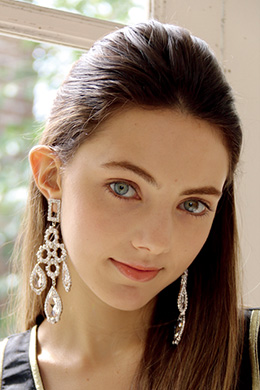Exposure compensation refers to the adjusting of a photo’s brightness as measured by a camera to match the preference of the photographer. No matter how good a camera is, it is not perfect and the measured brightness will not necessarily turn out as observed. (Reported by: Ryosuke Takahashi)

Understanding your camera to achieve your preferred finishing
Exposure compensation means adjusting the brightness computed by the camera to match the photographer's preferences. The exposure is determined based on the amount of light reflected by the subject. As a result, the camera has a tendency to lower the exposure when capturing subjects with a lot of white, thinking that they are too bright. Conversely, it tends to increase the exposure when a subject has a lot of black, thinking that it is too dark. Exposure compensation is, thus, a function used to adjust the exposure when the camera’s automatic exposure control does not match the image that the photographer has in mind.
Exposure compensation is a commonly used function in DSLRs. It can be used in backlit photography, when shooting a person wearing white or black clothes, as well as in many other situations. Once you understand exposure compensation and how to use it, taking photos will become more enjoyable and the finishing of your photos will also improve substantially. Follow the operating procedures of each camera to master the technique of exposure compensation. In addition, exposure compensation cannot be used in Basic Zone modes. Note that it can only be used in Creative Zone modes.
Making the subject look better and brighter — Increase the exposure

Shot with auto exposure
The exposure meter of the camera reacts to the skin’s brightness, making it appear darker than it seems. As a result, the skin appears a bit dull.

Shot with an exposure compensation of +0.7EV
This picture was taken with higher exposure compensation. The skin of the human subject appears bright as actually seen, with the colour hue reproduced faithfully as well.
Making black look more solid — Decrease the exposure

Shot with auto exposure
The camera over-reacts as the overall image is dark and the photo becomes a bit washed out as a result. The solid feel of the subject cannot be reproduced.

Shot with an exposure compensation of -0.7EV
The exposure compensation is decreased substantially. The black looks denser, making the subject appear more solid as well.
How to Operate the Exposure Compensation
(1) Select a shooting mode from the Creative Zone modes

Turn the mode dial to select a shooting mode from the Creative Zone modes.
(2) Select the desired exposure


Turn the electronic dial while pressing the Exposure Compensation button. Turn to the right to increase the exposure, and to the left to decrease it.
(3) Check the amount of compensation

The amount of compensation can be checked on the LCD screen and in the viewfinder display.

Born in Aichi in 1960, Takahashi started his freelance career in 1987 after working with an advertising photo studio and a publishing house. Photographing for major magazines, he has travelled to many parts of the world from his bases in Japan and China. Takahashi is a member of the Japan Professional Photographers Society (JPS).

































